The Project
Our project is a VR simulator sandbox of interacting with circuitry, designed to remove the both the hazard and resource obstacles of the physical world. The primary motivation was to focus on children in schools as the intended audience, because we know from both fact and experience that teaching children circuitry in school is prohibitively both expensive and dangerous. Why we went with VR headset and controllers is because they are very intuitive to use and they promote exploration. A few simple instructions is all a new user needs to get started on his/her own. The project is designed using Unity and SteamVR, because those softwares were readily available to us, both in terms of access and prior experiences.We took large inspiration from Logisim, developed by Carl Burch. Aside from needing to know what each component does and how they can be interacted with, the programme is very easy and intuitive to get into. We also realised from his work that projecting 3D structures to 2D spaces introduces the risk of cluttering, so that is something we wanted to improve upon.We also took large inspiration from pretty much any VR game, but we had Keep Talking and Nobody Explodes, developed by Steel Crate Games particularly in mind. The reason being that getting into most VR games goes almost immediately, which is very impressive that this particular game manages for you to do, despite introducing a lot of things for you to learn. What we got time to do was supporting serial circuits, include battery power sources, lighting light bulbs with varying intensity depending on the input current, a radio to be powered by the batteries, and of course the wires to connect everything together. Had we had more time, we would at least have introduced support for parallel circuitry, added switches and splitters. You can grab each of the interactable objects with the VR controllers, represented as gloved hands in the virtual space. A rigid 'snapping' functionality for the wires compensates for the lack of dexterity when trying to insert their ends into the components. To provide feedback to the user, we thought that audio is very underused in projects like these, so we decided on delivering through a complete system of sound effects. The challenges we aimed to overcome during the project includes, but are not limited to: • Coordinating and completing a large and ambitious project like this in a very short time span of little more than a month. • Constructing a faithful simulation of the way circuitry and physics work. • Making an intuitive and easy-to-get-into experience for any user, regardless of previous experiences, with the focus on children in 7th-9th grade (in Sweden). As the project went on, we encountered a few obstacles. Here are the main ones: • Circuitry can in its most general sense be representing a topological graph, with nodes and connections between them stretching without any specific constraints. Most graph-related problems in computer science are proven "NP hard", which means that solving them because prohibitively difficult as the problem size increases. It turns out that it applies for our simulation as well, which is why we only got time to implement serial circuitery, and not parallel as well. • The lack of tactile dexterity in a task that requires a fair bit of it normally made connecting the wires to the components very frustrating and difficult. We solved this by introducing 'snapping', which does the attaching action for you if you get the parts close enough. • Most official documentation of doing VR in Unity is deprecated, with no replacement to be found. This made learning experience more trial-and-error than it should have been. Anyway, we are happy with how the project turned out, despite the content that had to be cut, because we at least managed to prove the concept that it is possible to interact with circuitry through VR, without a steep learning curve of interacting with VR environments; you still need to actually learn the physics of electricity, etc. We have also gotten to learn to work with VR, which was very intimidating at first glance, as well as go back to elementary school physics a bit which is something most of us has forgotten at this point.
Demo
The project is finished.

Development of the project has finished, and this is the final blog post.
Throwing minigame added
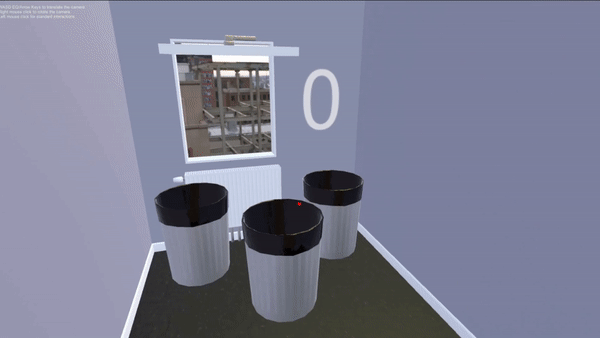
Once all other things were done, we spent 30 minutes creating a small minigame as a bonus easter egg!
Item limits implemented
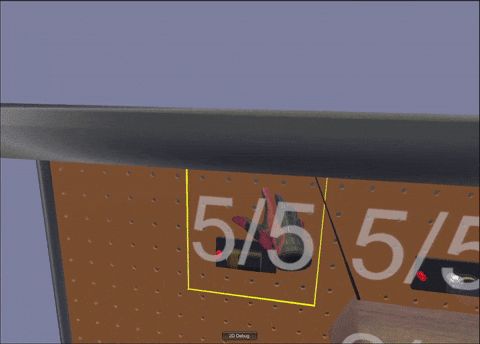
Added a set limit to how many of each item can be in the game.
Sound effects added

Sound effects have been added to give the user a more immersive experience.
Decorations for the room scene added
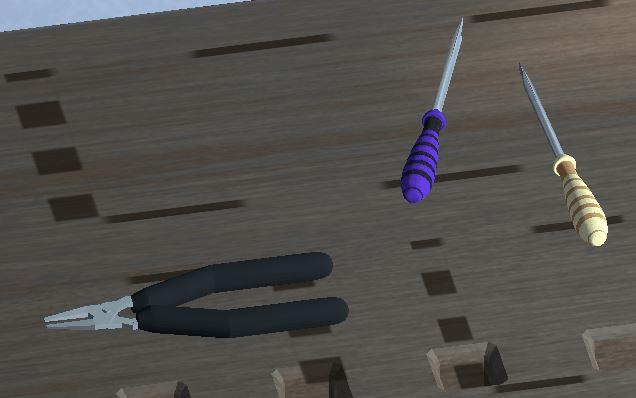
Two tool models have been made for the purpose of adding a more workshop-like atmosphere to the scene.
Workshop room created
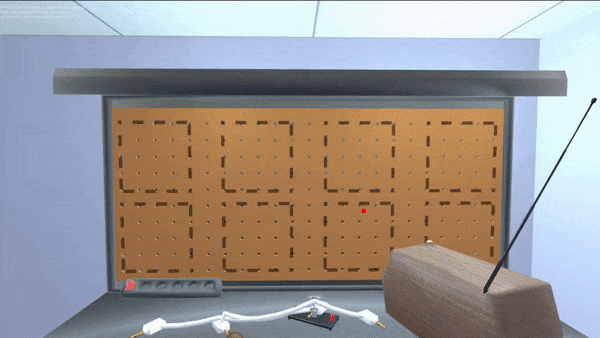
The play area could no longer just be a white tiled field, so we made a playing area in a small room with a table and trash can
Item spawners added
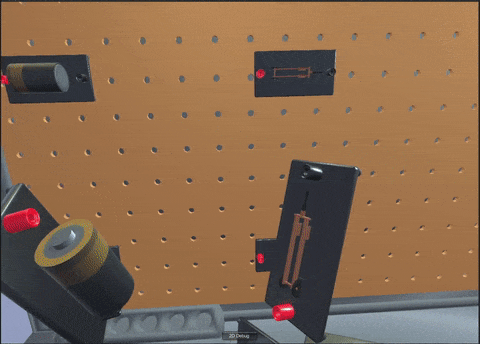
Added item spawners to the workbench.
Radio and placeholder audio added
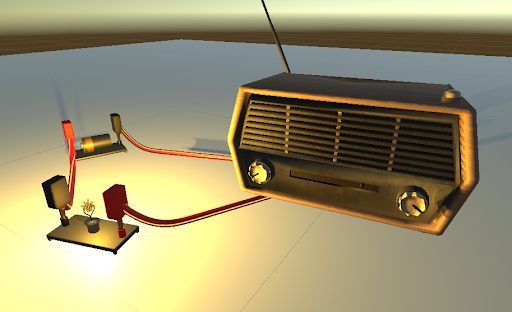
Creating a radio component to connect to a circuit for playing music in the workshop.
Different kinds of switch models added
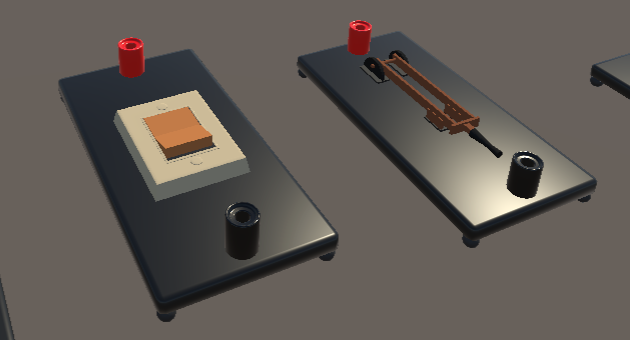
An improved knife switch and a common flip switch have been added to the project.
Wires, base plates and circuits added
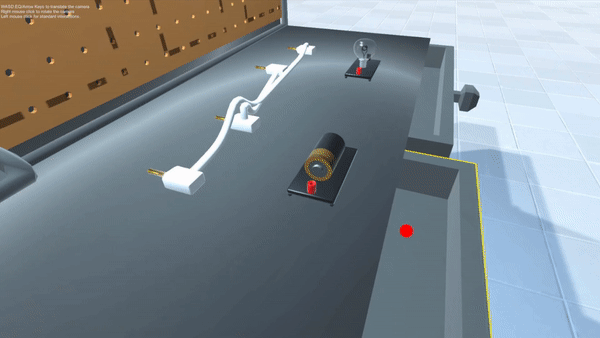
After a long development and debugging process, it is now possible to connect wires to components to create simple circuits
Container and garbage collection added
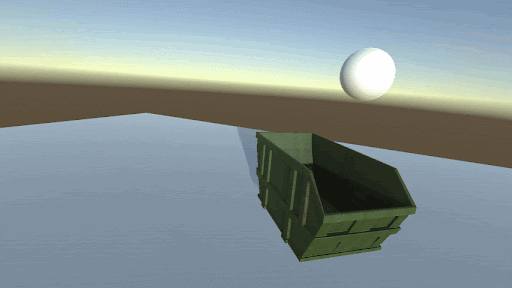
Creating a garbage container to recycle/collect components no longer in use.
Simple electrical components added
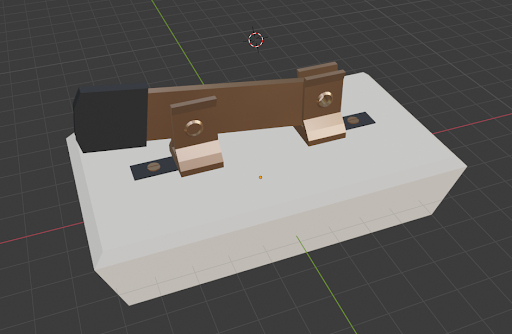
A C-battery and a simple knife switch added to the project; both are simple recreations in Blender based on objects the students are likely to have seen in real life.
Workbenches added
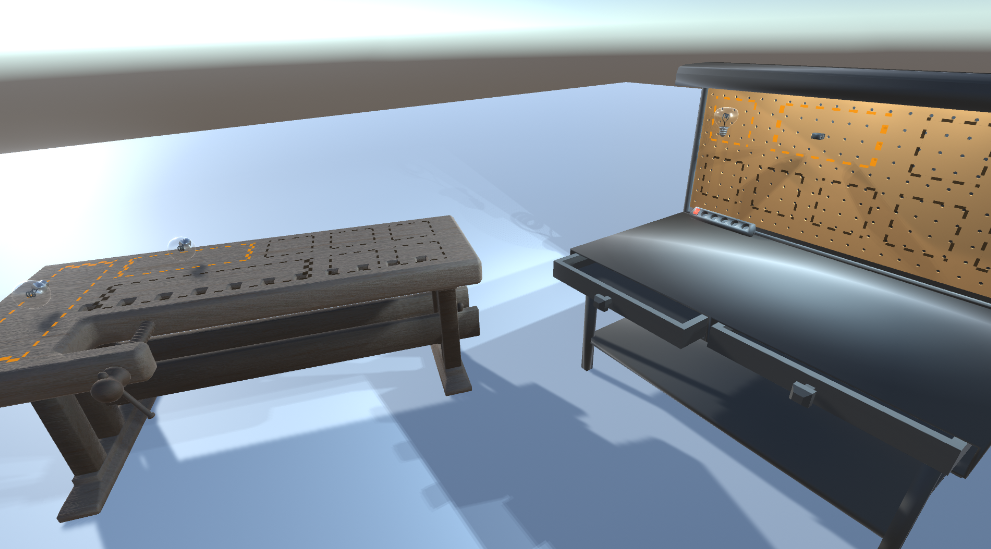
Creating workbenches for players to receive items from and build circuits on.
VR environment created
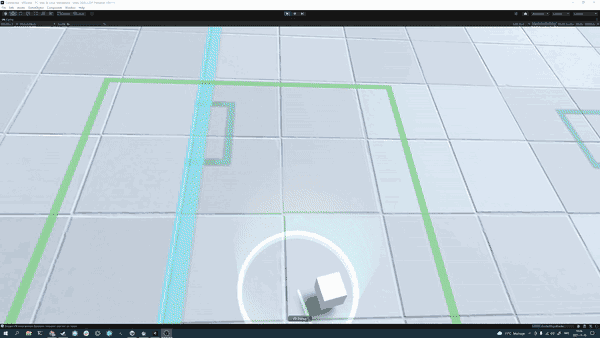
Development has begun, with a working VR environment initialised in Unity.
Light bulbs added
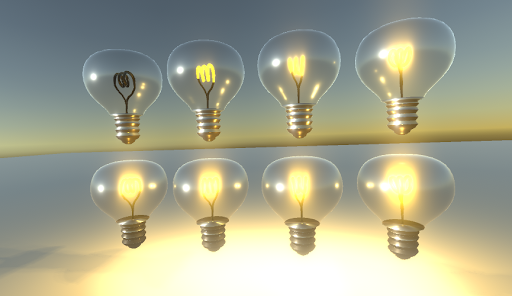
Creating light bulbs for the circuits in the game.
Initial concept idea created

We have officially begun developement, with an initial concept idea agreed upon.